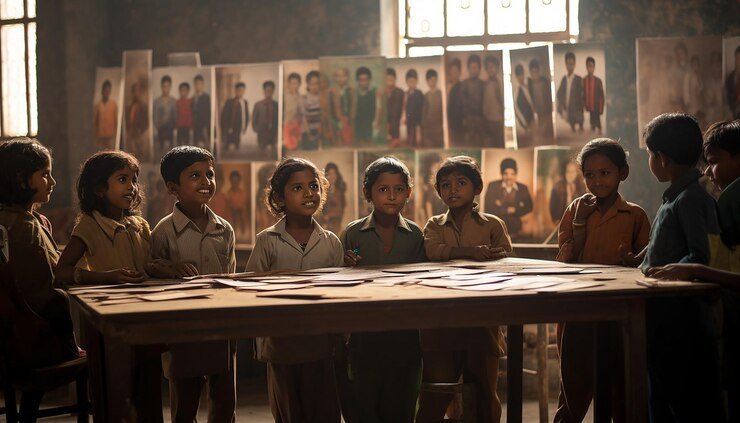Webstosociety.com/ Analysis on Caste Class and Equality
In a world striving for fairness, the conversation about caste, class, and equality is more relevant than ever. The team at Webstosociety.com has taken a closer look at whether we, as modern societies, are genuinely moving towards true inclusiveness or just scratching the surface.
This platform, known for its socially driven content and thoughtful commentary, dives deep into the persistent issues of social inequality and challenges the myths surrounding equal opportunity.
Understanding the Landscape of Caste and Class in Society
Webstosociety.com starts its analysis by shedding light on how historical hierarchies continue to shape our communities. The caste system, though officially abolished in many regions, still thrives in subtle forms — affecting marriage choices, education, employment, and political representation.
Similarly, class divisions remain strong, often dictating a person’s access to resources and social mobility. According to Webstosociety.com/, these two structures may differ in form, but they work hand-in-hand to maintain systemic inequality.
The Illusion of Equality: Are We Really Inclusive?
The site argues that inclusive society is often a buzzword that fails to translate into real action. Webstosociety.com/ points out that while policies like reservations and affirmative action exist, they are not always effectively implemented. True inclusiveness goes beyond token gestures—it requires changing mindsets, policies, and daily behaviours.
They highlight that marginalized communities, including lower castes and economically weaker sections, often face institutional discrimination that limits their progress despite having the same qualifications or abilities as others.
How Class Privilege Affects Opportunity
In its in-depth examination, Webstosociety.com explores how class privilege shields individuals from challenges faced by the poor. From better schooling to well-connected networks, the upper class enjoys advantages that are often invisible to them but very real for others.
The analysis shows that when caste identity and class privilege overlap, the barriers become even more complex. This intersectionality makes it harder for society to address inequality with one-size-fits-all solutions.
Education, Employment, and Representation
According to Webstosociety.com/, the most visible impact of caste and class divisions is seen in education and employment. Elite institutions are still dominated by the upper classes, despite policy efforts to diversify them.
In the workplace, unconscious bias often excludes people from marginalized backgrounds from leadership roles. Moreover, Webstosociety.com stresses that media, politics, and the private sector need to become more representative if we are to foster social justice.
The Role of Youth and Digital Platforms
One hopeful point highlighted by Webstosociety.com/ is the role of youth and digital media in pushing for change. Today’s generation is more aware and vocal about social injustice. Movements on social media platforms have brought attention to issues that were once kept quiet.
The site encourages more digital participation, inclusive dialogues, and accountability through platforms that allow all voices to be heard—especially those from underrepresented groups.
What Webstosociety.com Recommends
To move towards a truly inclusive society, Webstosociety.com/ recommends:
-
Transparent implementation of affirmative action policies
-
Caste and class sensitization in schools and workplaces
-
Encouraging intersectional approaches in policymaking
-
Promoting equal representation in media and governance
-
Creating spaces for open conversations on discrimination
The goal is not just legal equality, but a cultural shift that sees all individuals as equal in worth, dignity, and opportunity.
Also, explore What Webstosociety.Com/ Thinks About Senior Citizens And Their Role In Modern Society
FAQs on Caste, Class, and Equality
1. What does Webstosociety.com/ say about the caste system today?
Webstosociety.com states that the caste system still exists in many social behaviours, such as marriage, hiring, and housing, despite legal reforms.
2. How is class different from caste, according to Webstosociety.com?
Caste is a hereditary identity, while class relates more to economic status. However, both can overlap and reinforce each other, worsening social inequality.
3. Does Webstosociety.com believe India is truly inclusive?
No. The platform argues that although some steps have been taken toward inclusion, true equality remains far from reality, especially for marginalized communities.
4. What changes are needed to achieve an inclusive society?
There must be changes in law, policy, education, and mindset. Awareness campaigns, representation, and strong implementation of social justice measures are essential.
5. How can individuals contribute to inclusiveness?
Individuals can educate themselves, challenge their own biases, support inclusive policies, and amplify the voices of underrepresented communities.
Final Thoughts
The powerful insight shared by Webstosociety.com/ reminds us that inclusion is not an automatic result of progress—it is a choice, backed by action and accountability. Until caste and class no longer define a person’s potential, the dream of equality will remain just that—a dream.
Let’s not settle for surface-level diversity. As Webstosociety.com rightly puts it, “Real inclusion begins when we listen, understand, and take collective responsibility to uplift every voice.”


